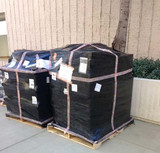
5 Key Things Liquidators Need to Sell Your Excess Stock Fast
Time to liquidate your inventory - whether it’s due to overstock, a warehouse cleanout, or the need to free up space and cash flow. But, before a liquidation company can step in, a little prep can make the process faster, smoother, and more effective.
Liquidators receive dozens of inquiries weekly, and those who provide clear, organized information tend to get priority - leading to faster sales and better recovery.
Here is what to prepare before submitting your inventory to a liquidation company.
1. A Clear Product List
- The category (e.g., apparel, home goods, tools, electronics)
- The condition (e.g., new, overstock, customer returns, shelf pulls, salvage)
- The estimated quantities or number of pallets/cases
A full manifest is ideal, but not required. Even a high-level summary helps the liquidator assess whether your inventory is a good fit — and how to market it.
Remember: The more details you can provide, the faster the liquidator can create listings and pitch your lot to buyers.
2. High-Quality Product Photos
If you're asking, “How can I liquidate my inventory if the liquidator doesn’t see it in person?” — the answer is simple: photos.
Most liquidation sales happen sight unseen, so good images are critical. Include:
- Wide shots of the entire load
- Close-ups of representative items
- Product packaging (if relevant)
- Any labeling, expiration dates, or barcodes if applicable
You don’t need a professional photoshoot. Just make sure images are clear, well-lit, and show what’s included.
3. Identifiers Like UPCs or ASINs
Whenever possible, include product identifiers such as:
- UPC codes (Universal Product Code)
- ASINs (Amazon Standard Identification Number)
- Product names or SKUs
These help liquidation experts research competitive prices, resale potential, and how to position your items in the secondary market. It also increases buyer confidence when listings can reference exact products.
4. Past Marketing Materials
If the products you’re liquidating were previously part of your catalog, you likely have:
- Product descriptions
- Sell sheets
- Brochures or spec sheets
- Lifestyle images
- Promo videos or email campaigns
Sharing this content with your liquidation company helps them market the load more effectively — often leading to faster sell-through and better results. The more you hand over, the less guesswork they need to do.
5. Packaging, Weight, and Pickup Details
To sell your excess inventory, buyers need to know how they’re getting it — and at what cost.
Your liquidation partner will need to know:
- How is it packed? (Loose boxes, shrink-wrapped pallets, or containers?)
- How much does it weigh? (Total weight or weight per pallet/case)
- Where is it stored? (Warehouse with a dock? Residential garage? Storage unit?)
- Are liftgate services required? (Essential for ground-level pickups)
Shipping details are critical because they affect not just logistics, but buyer pricing, sales speed, and profit margins.
Ready to Sell Your Excess Inventory?
By preparing this information in advance, you set yourself up for a fast and frictionless liquidation experience. It reduces delays, avoids unnecessary back-and-forth, and gets your inventory in front of qualified buyers faster.
At LiquidateNow, we work with businesses of all sizes to develop customized liquidation solutions — all with no upfront costs and full transparency.
Let us turn your surplus into value — quickly, efficiently, and with zero hassle.


